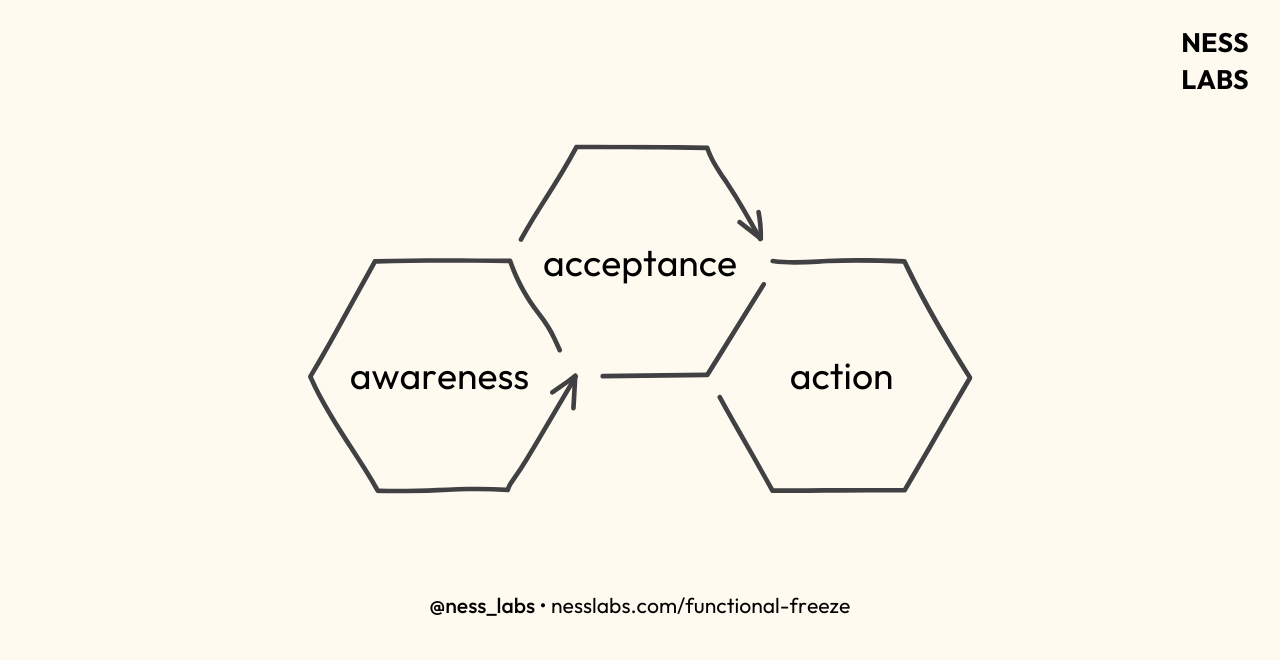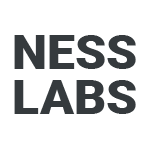You wake up, go through your morning routine on autopilot, and head to work – where you excel at your job. Your colleagues praise your productivity and reliability.
Yet when you return home, a strange paralysis sets in. The thought of cooking a proper meal feels overwhelming, so you order takeout again. Your running shoes gather dust in the corner as you sink into the couch, mindlessly scrolling through social media until bedtime. Weekend plans with friends get canceled because you “need to recharge.”
Months pass this way, and despite your professional success, your personal life has become stagnant. This is a functional freeze – a state where you’re performing well in your duties but are unable to invest energy in your own growth.
Fortunately, this doesn’t have to be permanent. With awareness, self-compassion, and deliberate action, you can thaw the freeze and rediscover a sense of aliveness in all areas of your life.
The paradox of high-functioning exhaustion
The functional freeze presents a fascinating paradox. On one hand, you’re capable of meeting or even exceeding expectations at work. On the other, you’re completely depleted when it comes to self-directed activities that can support your wellbeing and personal growth.
This dichotomy isn’t a character flaw – it’s rooted in how our brains allocate energy and attention. Research in cognitive psychology suggests that structured environments with clear expectations, deadlines, and external accountability tap into our brain’s executive functioning system, which can operate somewhat independently from our self-regulatory resources.
The workplace provides external scaffolding that supports productivity even when our internal motivation might be waning. However, this performance often comes at a cost: ego depletion, where the mental energy required for self-control becomes temporarily exhausted.
By the time you arrive home, your reserves for curiosity, exploration, and making good decisions are depleted. Activities requiring additional willpower – like cooking a healthy meal, pursuing a hobby, or even planning a career change – feel impossibly demanding.
So instead you gravitate toward passive consumption and instant gratification: scrolling through social media, binging streaming shows, or ordering convenient but unhealthy food. These behaviors provide immediate comfort but ultimately reinforce the freeze by failing to replenish your deeper needs for meaning, connection, and growth.
What makes this pattern particularly insidious is that it can persist undetected. High performance in one domain creates the illusion of overall thriving, while the slow erosion of your personal wellbeing happens beneath your conscious awareness.
As a result you might attribute your evening exhaustion to a demanding job, while the very activities that could help you break free – reflection and experimentation – are the ones that feel overwhelming.
How to thaw the functional freeze
Breaking free requires deliberate action, but not in the form of big changes that will only add to your overwhelm. Instead, it involves small, intentional shifts that will gradually rebuild your capacity for self-directed growth.

1. Awareness (recognize the patterns)
The first step is simply noticing the functional freeze. As psychologist Carl Jung noted, “Until you make the unconscious conscious, it will direct your life and you will call it fate.”
Set aside time for an honest assessment of how you spend your energy and attention. Practice self-anthropology by taking field notes, tracking your activities and energy levels for a day, noting when you feel engaged versus depleted.
Look for recurring patterns: Do you consistently postpone personal activities? Do certain work tasks drain you more than others? Are there moments when you feel more alive and present? This awareness isn’t about self-judgment but rather about gathering data that can inform your next steps.
2. Acceptance (honor your current capacity)
It might sound paradoxical, but accepting your limitations creates space for growth by avoiding a cycle of overcommitment and disappointment that can deepen the freeze.
Resist the urge to immediately implement an ambitious self-improvement plan. Instead, acknowledge your current limited capacity with compassion. If you’re constantly exhausted, fighting that reality will only create more frustration.
Start by accepting that your energy has limits and that recovery is a legitimate need. This might mean deliberately scheduling downtime, setting boundaries around work hours, or saying no to additional commitments.
3. Action (design tiny experiments)
Small, low-stakes changes are less taxing on your depleted resources. Adopt an experimental mindset by trying one tiny experiment each week: perhaps a five-minute morning meditation, a quick walk during lunch, or turning off notifications for an hour each evening.
Tiny experiments don’t require a lot of willpower but can gradually expand your capacity for change. Each experiment provides data about what works for your unique situation, which will help you design a personalized path out of the freeze.
A functional freeze, while challenging, can ultimately serve as a powerful catalyst for growth.
Recognizing that you’re stuck in toxic productivity rather than meaningful growth, often marks the beginning of a more experimental life – one where success isn’t measured solely by external productivity but by alignment with your deeper aspirations.
The very discomfort that signaled the freeze can become the compass that guides you toward a renewed sense of aligned aliveness.
